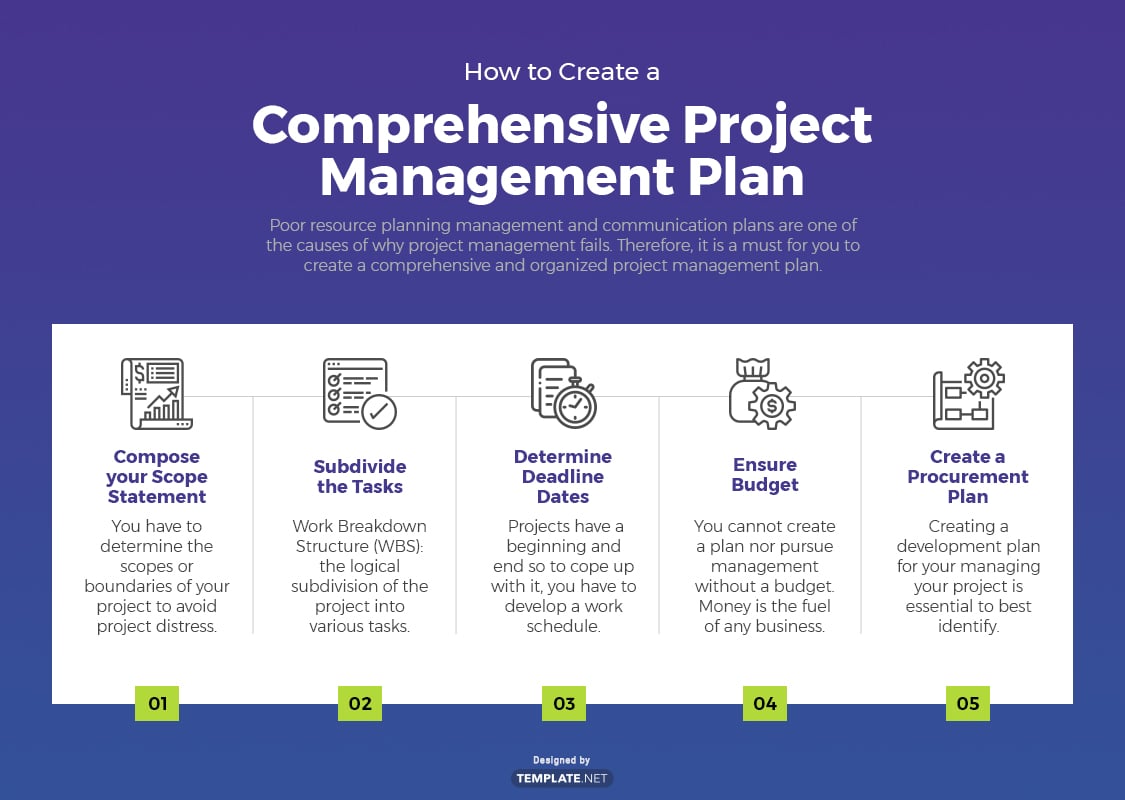How to Write a Comprehensive Project Management Plan
 A comprehensive project management plan is the cornerstone of successful project execution. It serves as a roadmap that guides the entire project team from initiation to completion, ensuring that goals are met, risks are managed, and stakeholders are kept informed. In this guide, we will break down the essential components of creating a comprehensive project management plan that sets the stage for successful project delivery.
A comprehensive project management plan is the cornerstone of successful project execution. It serves as a roadmap that guides the entire project team from initiation to completion, ensuring that goals are met, risks are managed, and stakeholders are kept informed. In this guide, we will break down the essential components of creating a comprehensive project management plan that sets the stage for successful project delivery.
1. Project Introduction and Objectives
The project management plan begins with a clear and concise introduction to the project. Describe the project’s purpose, scope, and objectives. This section should answer questions like why the project is being undertaken, what problem it aims to solve, and what benefits it will bring. Set realistic and measurable objectives to provide a clear direction for the project team.
2. Project Scope and Deliverables
Defining the project scope is crucial for avoiding scope creep – the tendency for the project to expand beyond its original boundaries. List the deliverables that will be produced, the work that needs to be done, and the activities required to achieve project objectives. Clearly communicate what is included and excluded from the project scope to manage expectations effectively.
3. Project Schedule and Milestones
Develop a detailed project schedule that outlines the sequence of activities, their start and end dates, and dependencies between tasks. Identify critical milestones – significant points in the project timeline – that indicate progress and allow for assessment of project health. Ensure the schedule accounts for potential risks and includes buffer time to accommodate unexpected delays.
4. Resource Management
In this section, detail the resources required for the project’s successful execution. This includes human resources, such as team members and their roles, as well as physical resources like equipment, tools, and facilities. Allocate resources efficiently to ensure tasks are adequately staffed and equipped.
5. Risk Management
Identify potential risks that could impact the project and outline strategies for mitigating or managing these risks. A comprehensive risk management plan should include risk identification, assessment, response strategies, and a contingency plan. Regularly monitor and update the risk register as the project progresses to stay ahead of potential issues.
6. Communication Plan
Effective communication is vital for project success. Define how information will be shared, who the stakeholders are, and the frequency and format of communication. Consider various communication channels, such as emails, meetings, status reports, and project management tools. A well-structured communication plan ensures that everyone is on the same page and informed about project progress.
7. Quality Assurance and Control
Outline the quality standards that the project deliverables must meet. Describe the processes and procedures that will be put in place to ensure quality throughout the project lifecycle. This includes quality assurance activities to prevent defects and quality control activities to identify and rectify issues.
8. Budget and Cost Management
Clearly define the project budget, including estimated costs for resources, materials, and other expenses. Track and manage costs throughout the project to prevent overruns. Include provisions for potential changes that may impact the budget and establish a process for obtaining approvals for budget adjustments.
9. Change Management
Projects often encounter changes in requirements, scope, or other aspects. Develop a change management process that outlines how changes will be evaluated, approved, and implemented. This process helps maintain project focus while allowing for necessary adjustments when justified.
10. Stakeholder Management
Identify and analyze key stakeholders who have an interest in the project. Understand their needs, expectations, and potential influences on the project. Develop strategies for engaging and managing stakeholders throughout the project lifecycle to ensure their support and minimize potential conflicts.
11. Project Closure Plan
Plan for the orderly closure of the project by defining the criteria for project completion, acceptance criteria for deliverables, and procedures for obtaining formal sign-off from stakeholders. Outline the steps for transitioning project results to operational teams and conducting a project review to capture lessons learned.
12. Appendices and Supporting Documents
Include any supplementary documents, charts, diagrams, or reference materials that support the project management plan. These could include organizational charts, process flowcharts, technical specifications, and any other relevant information.
In conclusion, a comprehensive project management plan is a critical tool for guiding the successful execution of projects. By addressing these twelve key components, project managers can create a roadmap that clarifies project goals, scope, timelines, resources, risks, and communication strategies. Regularly reviewing and updating the plan as the project progresses helps ensure that the team stays aligned, objectives are met, and potential issues are proactively managed. Remember that flexibility and adaptability are important qualities for a project management plan, as projects often evolve over time. With a well-crafted plan in place, project teams can navigate challenges with confidence and deliver successful outcomes.